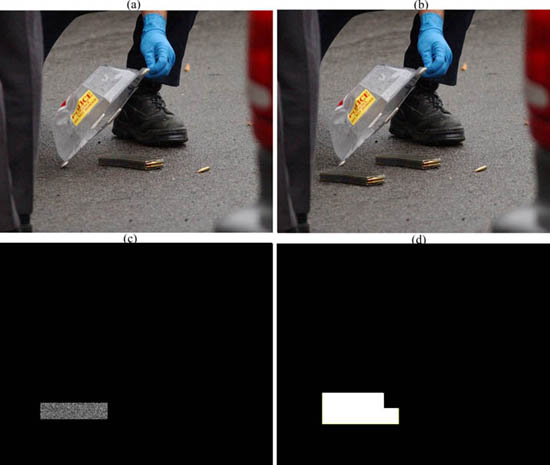Noise inconsistencies analysis
A commonly used tool to conceal traces of tampering is the addition of locally random noise to the altered image regions. The noise degradation is the main cause of failure of many active or passive image forgery detection methods. Adding locally random noise may cause inconsistencies in the image’s noise. Therefore, the detection of various noise levels in an image may signify tampering. In this work, we proposed a method capable of dividing an investigated image into various partitions with homogenous noise levels. In other words, we introduce a segmentation method detecting changes in noise level. The additive white Gaussian noise is assumed.
We defined the problem in the following way: Given an image containing an arbitrary number of isolated regions of unknown location and shape with different noise variances, our task is to determine the presence of such regions and to localize them. The proposed method is based on a few main steps:
- Wavelet transform
- Tiling sub–band HH1 with non-overlapping blocks
- Blocks noise variance estimation
- Blocks merging

The above image shows an example of the method's output. Shown are the original image (a), the doctored image containing a duplicated region additionally corrupted by local additive white Gaussian noise (b), the noise corrupted region (c) and the output of the method proposed applied to the doctored image (d). Obtained results show that the proposed method makes it possible in a simple and blind way to divide an investigated image into various segments with homogenous noise level.
| Details: | |
| Duration: | 2008 - 2010 |
| Contact person: | Babak Mahdian |
| Involved people: | Stanislav Saic |
Publications:
- B. Mahdian and S. Saic. Detection of resampling supplemented with noise inconsistencies analysis for image forensics. In International Conference on Computational Sciences and Its Applications, pages 546–556, Perugia, Italy, July 2008. IEEE Computer Society.
